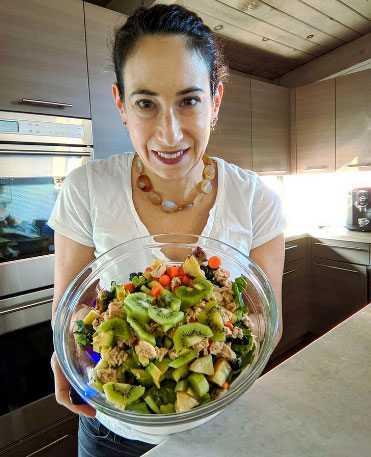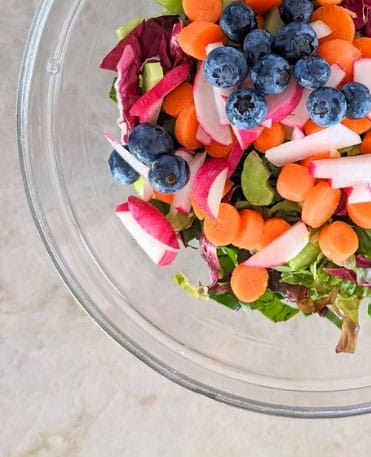May is Celiac Awareness Month! Back in March I wrote an article about gluten and took a deep dive into the immune response to gluten and how to test for celiac disease. What I did not have a chance to discuss was the obvious….what do you do when you get that celiac disease or gluten/wheat sensitivity diagnosis?
 Disclaimer: This post contains affiliate links. If you use the links to make a purchase, I may make a small commission. All opinions are my own. Thanks!
Disclaimer: This post contains affiliate links. If you use the links to make a purchase, I may make a small commission. All opinions are my own. Thanks!
Now, the first thing you might do is panic. “OMG I’m never going to eat bread again”. And then you may take what is called a “last chance supper” and eat all the gluten you can get your hands on. That is probably not the best decision but completely understandable. Once you get that out of your system, now it’s time to focus on healing. I have several tips to help you start a gluten-free lifestyle on the right foot.
Step one: Get familiar with gluten containing products
Gluten is EVERYWHERE. It’s really important to familiarize yourself with the common and not-so-common places where gluten is present. Here is a breakdown of where you will find gluten:
The Obvious Places
- Gluten is the main protein in wheat, so anything that contains wheat or a wheat derivative has gluten. This includes most breads, all wheat products including wheat germ, wheatgrass and wheat starch, bread crumbs and croutons.
The Somewhat Obvious Places
- Gluten is also found in non-”wheat” grains such as rye, barley, bulgar, durham, farro, graham, kamut, pilafs and semolina.
The Hidden Places
- This is where you will need to employ your ingredient label reading skills. Gluten can be hidden in a lot of processed foods, additives, vinegars and condiments. Look for items that include starch, hydrolyzed wheat proteins, malt and brewers yeast. Gluten is commonly found in soy sauce and other condiments, coating mixes, french fries, imitation fish, ice cream, medications, soup bases and bouillons and salad dressings.
You can check out this list for a more detailed description of where to find gluten in food products. I also have a gluten-free guide that I would be happy to send to you as well. Please go here to request a copy.
 Reading labels does take practice and patience, but you will quickly learn which foods to include in your diet and which ones to steer clear. Seek out foods with the gluten-free symbol. These foods have been tested and verified to be gluten-free.
Reading labels does take practice and patience, but you will quickly learn which foods to include in your diet and which ones to steer clear. Seek out foods with the gluten-free symbol. These foods have been tested and verified to be gluten-free.
Step two: It’s time for a pantry clean-out
It’s time to ditch all of the gluten containing foods in your home. This will help keep you compliant with a gluten-free lifestyle and it will help prevent accidental cross contamination. However, the degree to which you clean out your pantry depends on your living situation. If you have others in your household who are not gluten free, I recommend you pick a shelf in your pantry to store all of your gluten-free items and keep it separate from the foods that do contain gluten. Fill your pantry shelf with gluten-free foods you can eat and cook with. If you like to bake, try Bob Red Mill’s 1-to-1 Baking Flour. I also love experimenting with almond flour and coconut flours. There are plenty of gluten-free crackers and snacks to choose from these days. My advice is to stick to the products with the fewest ingredients and ingredients you can pronounce.
Step three: Invest in new kitchen tools
Why new kitchen tools? You want to avoid cross contamination as much as possible. If you have gadgets like toasters or baking tools like sheet pans and muffin tins that are not squeaky clean, it is best to toss them and start over with new ones. If you live with other gluten eaters, purchase items that are designated for gluten-free use only. These include knives, cutting boards, baking sheets and pans, and other items that can be difficult to completely clean.
Step four: Get your micronutrients checked
The last, and usually overlooked, part of the healing journey is nutrition optimization. Celiac disease or gluten/wheat sensitivities can lead to nutrient deficiencies because of the ongoing inflammation in the gut and inability to absorb nutrients efficiently. Common nutrient deficiencies include: folate, vitamin B12, vitamin D, calcium, iron, zinc, selenium and magnesium (1). It’s best to get your levels checked to make sure you are addressing any deficiency that may exist. Supplementation may be warranted for a period of time while your intestinal lining heals.
Step five: Learn to speak up for yourself
Standing up for yourself is important when you are talking to your health care team. It is also important to do with your friends, family, and anyone else who may be preparing your food. Eating a gluten-free diet when you have celiac disease or gluten/wheat sensitivities is NOT a preference, it is a priority. This is especially important when eating out. Here are some tips to eating out:
- If possible, call restaurants ahead of time to ask if they can accommodate your gluten-free lifestyle. Ask to have your food cooked separately and be sure to mention that gluten is an allergy for you.
- When eating at a friend or family’s home, discuss the menu with your host or hostess. Bring your own food if it will make you feel more comfortable.
- When traveling abroad, print out allergy cards and give them to your server. There is nothing worse than not being able to translate gluten to non-english speakers (believe me, I’ve been there!).
Getting a celiac or gluten/wheat sensitivity diagnosis can be devastating and overwhelming. However, there are still plenty of foods you can enjoy without feeling deprived. Knowing the foods you can eat can help lift that huge weight off your shoulders. If you need help navigating your new eating plan, please contact me or another registered dietitian for help.


